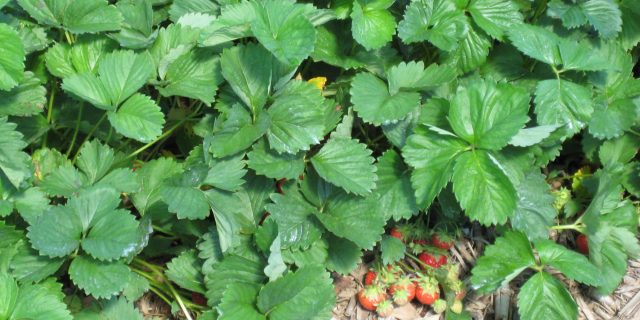14
Dec
Ultraviolet Light Researched as a Pest Control Technique

(Beyond Pesticides, December 14, 2022) Ultraviolet (UV-C) light has the potential to successfully manage mite (Tetranychus urticae) populations without reducing yields or resorting to toxic pesticides, according to research published by scientists at University of Florida. “Since very few miticides (sprays) are currently effective in suppressing twospotted spider mites in strawberries, the use of UV light provides an effective physical control method that can be used in fields and in high-tunnel strawberry production systems,” says study author Sriyanka Lahiri, PhD. The findings provide an encouraging technique for farmers, but further investigation is needed to observe the success of this approach in other cropping systems.
Researchers compared the efficacy of four treatment approaches, including use of the insecticide spinetoram, a low powered application of UV-C light twice a week, a high-powered application of UV-C light twice a week, and an untreated control. Researchers also looked closely at mite egg hatchability by rearing eggs in the laboratory and then transferring them out to the field for treatment with UV-C light.
Results were not consistent across the two-year trial as researchers indicate that in most of the field trials, no effect was seen due to low levels of natural infestation. However, during the second year’s field trial, it was found that high-powered applications of UV-C light were effective at suppressing mite populations without negatively impacting yield. Researchers determined that spinetoram also adequately suppressed the pests, but it should be noted that the field trial did not follow organic practices and included a broader chemical approach that separately employed chemical weed suppression, fungicide use, and soil fumigation. The authors further note that T. urticae mites have a propensity to develop resistance to insecticidal sprays, noting data on their ability to withstand active ingredients like abamectin, bifenazat, bifenthrin, fenpyroximate, and spirodiclofen.
“An added advantage is that UV light does not leave any residue behind and can be applied using automated robotic units already in production by commercial sources,” Dr. Lahiri says.
The results of the study line up with prior research conducted by the same University of Florida team regarding the use of UV-C radiation for powdery mildew control on strawberry plants. “UV treatments applied once or twice weekly were as effective as the best available fungicides applied on similar schedules for control of strawberry powdery mildew,” study author Natalia Peres, PhD said at the time. “It’s not a one-time fluke.”
While the results are promising for both pest and fungal problems, any level of human intervention can carry both risk and rewards. A study published in 2012 found that reducing, rather than increasing and treating with UV light, was effective at suppressing aphid infestations. Using netting that filtered UV radiation, researchers were able to reduce aphid populations compared to those consistently exposed to UV light.
Any level of disturbance to a natural system will result changes to that system that are difficult to account for. And there are emerging studies on pest management that call into question a range of accepted knowledge. Research published last month came to the conclusion that putting up with moderate levels of pests, in this case scale insects on landscaped trees, actually had the effect of promoting the numbers of beneficial pest predators, while not causing significant damage to trees. As study coauthor Caleb Wilson, PhD, noted in an article discussing the paper, “Treating a tree with pesticides could kill off natural enemies that would otherwise help manage nearby pests. In other words, treating a tree with pesticides could alleviate pest problems within the tree but could result in pest outbreaks in shrubs beneath the tree as natural enemies are killed off.”
In a similarly surprising study published last month, it was determined that managing cucumber beetles on watermelon crops had no significant impact on the ultimate yields farmers enjoyed; it was the number of visits by wild pollinators that had the greatest influence.
In this context, it is unsurprising that organic systems, which require an approach that focuses on maintaining or improving soil, and limits even natural pesticide use in favor of ecological approaches, represents the most profitable approach for farmers. For more information on the importance of transitioning to organic agriculture, see Beyond Pesticides’ Organic program page.
All unattributed positions and opinions in this piece are those of Beyond Pesticides.
Source: UF/IAS press release, Pest Management Science










